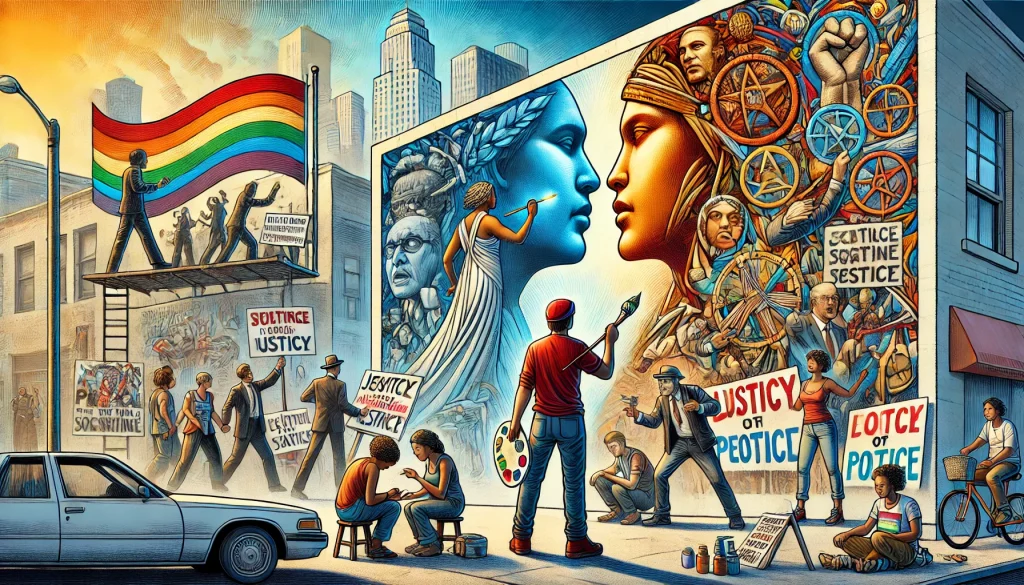Introduction
Art has played a transformative role in shaping societies throughout history. From political revolutions to civil rights movements, artists have used their creativity to challenge norms, inspire activism, and advocate for justice. For students studying the intersection of art and social change, completing assignments can be complex, requiring critical analysis, historical context, and creative thinking. This is why many students seek Art and Social Change homework help to better grasp these concepts.
In this detailed guide, we will explore the historical impact of art on social change, key movements, influential artists, and resources for academic assistance. Whether you are analyzing protest art, writing about cultural shifts, or creating your own art piece, this guide will provide valuable insights into Art and Social Change homework help.

The Role of Art in Social Change
Art has been a catalyst for societal transformation by:
- Expressing dissent and resistance
- Amplifying marginalized voices
- Raising awareness about social injustices
- Inspiring collective action
Historical Examples of Art Influencing Social Change
- The Harlem Renaissance (1920s-1930s)
- Featured African American writers, musicians, and visual artists who challenged racial stereotypes.
- Key Figures: Langston Hughes (poetry), Jacob Lawrence (painting)
- More information: National Museum of African American History
- The Mexican Mural Movement (1920s-1940s)
- A public art movement that depicted revolutionary themes and indigenous history.
- Key Figures: Diego Rivera, David Alfaro Siqueiros
- More information: Google Arts & Culture
- Dadaism and Anti-War Art (1916-1924)
- An avant-garde movement protesting World War I through satirical and abstract art.
- Key Figures: Marcel Duchamp, Hannah Höch
- Civil Rights Movement Art (1950s-1960s)
- Used photography, posters, and music to mobilize communities against segregation.
- Key Figures: Gordon Parks (photography), Nina Simone (music)
- More information: Civil Rights Digital Library
- Street Art and Graffiti (1970s-Present)
- Artists like Banksy and Shepard Fairey use public spaces to challenge power structures.
- More information: Tate Museum on Street Art
Challenges Students Face in Art and Social Change Homework
1. Understanding Historical Context
Many assignments require analyzing historical movements and their impact on contemporary issues.
2. Analyzing Symbolism in Art
Interpreting artistic meaning and symbolism can be subjective and complex.
3. Structuring Essays and Arguments
Writing about art requires a balance of research, critical thinking, and clear argumentation.
4. Finding Reliable Sources
Students need access to credible sources to support their claims.
Where to Find Art and Social Change Homework Help
1. Online Academic Resources
- Khan Academy – Free lessons on art history and social movements.
- The Metropolitan Museum of Art – Digital archives and art analysis.
- MoMA Learning – Educational resources from the Museum of Modern Art.
2. University Art Libraries
Many universities have digital libraries with scholarly articles on art and social change.
3. Online Tutoring Services
- Chegg Study – Expert assistance with essays and research.
- Tutor.com – One-on-one tutoring for art and history topics.
4. Discussion Forums and Communities
- Reddit’s r/ArtHistory – Discussions on historical and contemporary art movements.
- Art History Teaching Resources – Lesson plans and research articles.
Tips to Excel in Art and Social Change Assignments
1. Develop a Strong Thesis Statement
A clear thesis helps organize your analysis and argument.
2. Use Visual Analysis Techniques
Break down artwork using elements like color, composition, and symbolism.
3. Incorporate Historical Evidence
Support claims with historical documents, artist statements, and scholarly research.
4. Engage with Multiple Perspectives
Consider how different cultural, political, and social viewpoints shape interpretations of art.
5. Cite Your Sources Properly
Use proper citation formats like MLA, APA, or Chicago style to avoid plagiarism.
Common Mistakes to Avoid
- Overgeneralizing Art Movements – Each movement has unique characteristics and should not be lumped together.
- Ignoring Artistic Techniques – Understanding an artist’s technique can provide deeper insight into their message.
- Failing to Contextualize – Art must be analyzed in relation to its historical and social background.
- Relying Only on Personal Interpretation – Academic work should be backed by scholarly research.
Conclusion
Understanding the relationship between art and social change requires a deep dive into history, politics, and artistic expression. Whether analyzing murals, protest art, photography, or contemporary installations, students must develop critical thinking skills and research abilities. Seeking Art and Social Change homework help through online resources, academic journals, and tutoring can significantly improve comprehension and assignment quality.
If you need further Art and Social Change homework help, explore the links provided and engage with expert resources to enhance your understanding.


